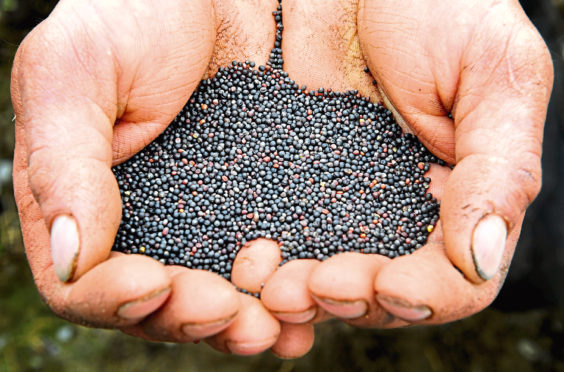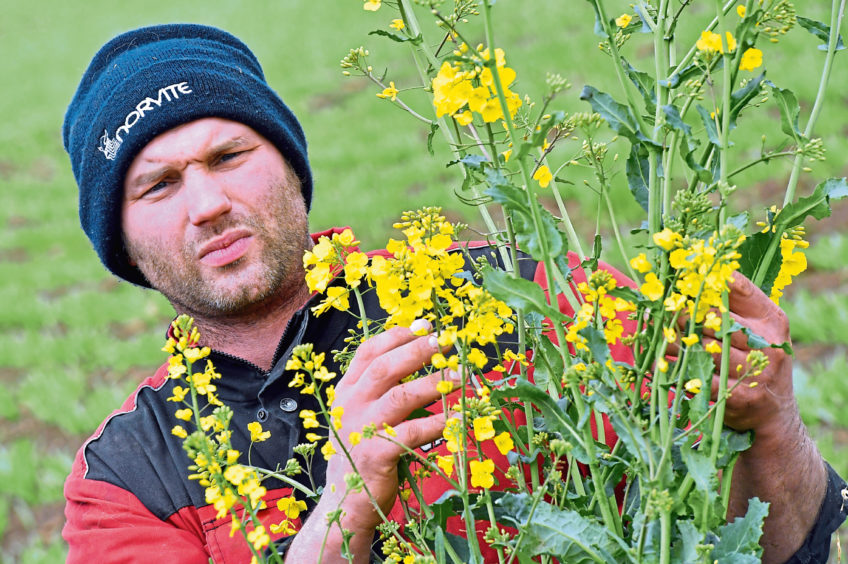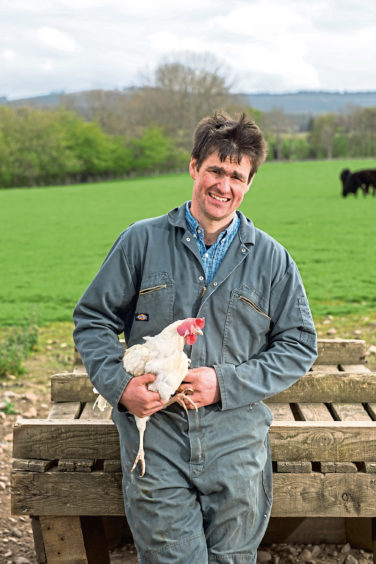Five north-east farmers are to grow organic oilseed rape as part of a pilot project to produce locally-sourced organic animal feed with the aim of replacing imported materials.
If successful, the five pioneers are looking to achieve organic yields similar to the average for conventional oilseeds, but with a selling price which is two to three times that of conventional crops.
“We’re currently sourcing organic feed materials from as far away as China to satisfy local market demands,” said David McClelland, technical director of Scottish feed manufacturer Norvite, which is working with the pilot group.
“If we can get local supplies it will represent a huge opportunity for us and the farmers involved.”
Supported by the Soil Association Scotland-led Rural Innovation Support Service (RISS), the farmers and specialist advisers recently visited Sweden to explore how farmers there are successfully growing just under 25,000 acres of organic oilseed rape out of a national oilseed crop of 272,000 acres.
One of the farmers involved in the project, Murray Cooper of Mains of Thornton, near Inverurie, said: “It was impressive to see the Swedish crop, especially as it’s being grown on the same latitude as Scotland with a very similar climate.”
Mr Cooper already has 300 acres of organic crops in production and is now set to add organic oilseed rape into his cropping mix.
He said: “Before I went to Sweden I was very sceptical if the crop could be grown successfully and cleanly on its own under our conditions but after seeing what farmers are doing there I have no doubt that it is possible. We just have to manage weeds properly and adhere to specific crop timings.”
He said the trickiest part of growing the crop was likely to be weeding.
Mr Cooper added: “We’re not really geared up for it here in the UK but over in Sweden they have a machine that sows, fertilises and does inter-row weeding. I’m talking to the other farmers about how we might get one for use here.”
Having just planted a plot of spring organic oilseed rape on its own, Mr Cooper is planning to follow on with an autumn organic sowing.
This will probably combine oilseed rape with clover or beans to provide the crop with some nitrogen over the growing season.
Mr Cooper said: “I’ll be looking to get the autumn crop planted in either the first or second week of August with about 30 acres in total being given over to organic oilseed rape this year.”
Asked how big he thought the future Scottish production of the crop might become, given Sweden’s 10% output example, Mr Cooper said it would all depend how the pilot goes.
He said: “A lot of farmers will be watching to see how we deal with the crop.
“It will be difficult to get others to adopt it until we can show we can control volunteers and that it’s not going to take two to three years to get a significant area in the ground.
“While the crop is notoriously difficult to grow, however, producing it ourselves here in Scotland would give us control of our own feed resources, reduce our reliance on imported soya and reduce our fuel footprint. In addition, we already have Norvite to do the processing.”
With four other growers already on board, and at least another 10 farmers reported by the Soil Association to be “watching with interest”, the prospects for expansion in the north-east certainly appear strong.
Gordon Whiteford, another pilot member, said: “The market for organic animal feed is huge.”
Mr Whiteford has been producing organic eggs at Lower Mill of Tynet Farm, Buckie, since 2005 and is one-year into the conversion of his cropping land to organic standards.
He said: “Demand is certainly there for poultry and pig feeds and for other sectors as well. The challenge now is to see if we can successfully grow the crop locally.”
Mr Whiteford’s own trial programme is based on 10 acres of spring crop, which went into the ground this week, and another 10 acres of autumn crop, scheduled for planting by mid-August.
He said: “Our spring trial is split into four blocks, consisting of 2.5 acres each of oilseed rape on its own, peas on their own, plus two blocks of oilseed rape and peas combined, sown at different rates. We’ll see what happens.”
The other pilot farmers are Martin Birse, Pitgaveny Farms, Elgin; George Philip of Camphill School farm, Aberdeen, and Willie Mitchell of AA Carrots, Turriff.
Alongside input from Norvite and support coming through RISS, the development of the Scottish organic oilseed rape plan was helped by Jim Booth, head of co-op development at the Scottish Agricultural Organisation Society (SAOS).
He said: “This is really innovative stuff, bringing people together from along the whole supply chain to address a common objective.
“They’d been talking for a while, so it was great to be able to give the idea a bit of support and direction.”
Mr McClelland added: “Organic farmers are by nature innovative, with a willingness to try things out. They’re also not scared of failure. We’re excited about the process.”


